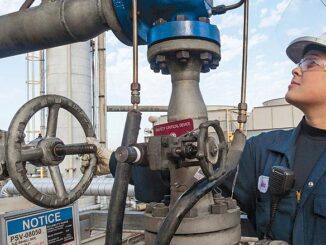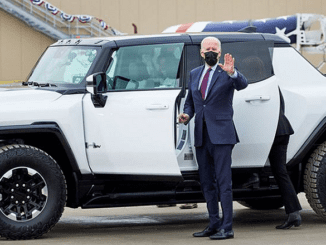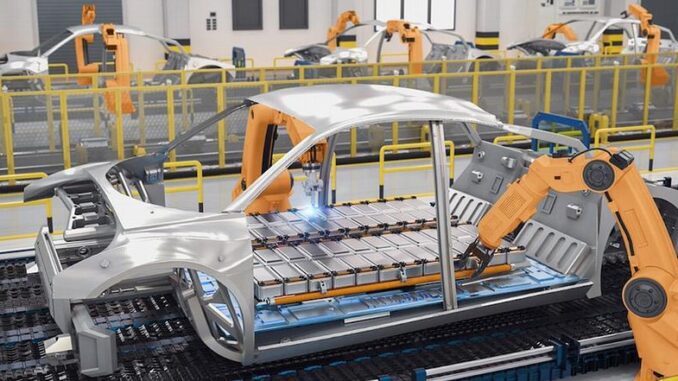
WASHINGTON, DC, March 21, 2024 (ENS) – Final national pollution standards for passenger cars, light- and medium-duty vehicles for upcoming model years 2027 through 2032 were set this week by the U.S. Environmental Protection Agency following an 11-month public consultation process.
As it turns out, EPA is finalizing the same standards the agency originally proposed for model year 2032, but the standards differ in one important respect – the new final rule allows more time for the auto sector to scale up clean vehicle manufacturing supply chains in the first three years covered by the rule.
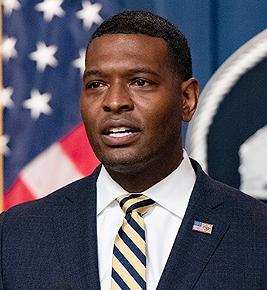
“Let me be clear. Our final rule delivers the same, if not more, pollution reduction than we set out in our proposal,” EPA Administrator Michael Regan told reporters, announcing the rule on March 20, 2024 in Washington, D.C.
“Folks, these new standards are so important for public health, for American jobs, for our economy and for our planet. In addition to carbon pollution, the final standards also will reduce other serious air pollution that contributes to heart attacks, respiratory illnesses, aggravated asthma and decreased lung function,” Regan explained.
Compared to the existing model year 2026 standards, the final model year 2032 standards “represent a nearly 50 percent reduction in projected fleet average greenhouse gas emissions levels for light-duty vehicles and 44 percent reductions for medium-duty vehicles,” the EPA says.
Motorists to Save as Climate Solutions Emerge
In 2023, Americans purchased a record 1.2 million electric vehicles, but still the transportation sector is the largest U.S. source of greenhouse gas emissions, amounting to 29 percent of the nation’s total.
Light-duty vehicles like passenger cars emit the most greenhouse gases, 58 percent, accounting for 16.5 percent of total U.S. greenhouse gas emissions, the EPA states in this rule.
The 2027-2032 standards are expected to avoid 7.2 billion tons of carbon emissions and provide nearly US$100 billion of annual net benefits to society.
EPA calculates there will be at least $13 billion of public health benefits each year due to improved air quality. The new standards are expected to reduce fine particulate matter and ozone, preventing up to 2,500 premature deaths annually in 2055 as well as reducing heart attacks, respiratory and cardiovascular illnesses, aggravated asthma, and decreased lung function.
Drivers can expect a total of $62 billion in reduced annual fuel costs, maintenance and repair costs.
Once fully phased in, in 2032, the new standards are expected to save the average American driver an estimated $6,000 in reduced fuel and maintenance over the life of a vehicle.

“From plug-in hybrids to fuel cells to fully electric, drivers have more choices today. Since 2021, sales of these vehicles have quadrupled and prices continue to come down. This growth means jobs, and it means we are moving faster and faster to take on the climate crisis,” Ali Zaidi, President Biden’s national climate advisor, said as the new standards were unveiled in Washington.
Democrats in Congress support the new standards, among them Senator Debbie Stabenow of Michigan, a state whose economy is founded on the auto industry.
“I’ve always said Michigan automakers are the best in the world. And this is their moment,” Stabenow said. “I appreciate EPA’s commitment to engaging with our automakers and autoworkers to develop an ambitious but achievable final rule. It represents an opportunity for union workers to continue to build the vehicles of the future right here in the U.S. and tackle the climate crisis.”
Timing Can Ease the Transition to EVs
EPA is finalizing this rule as sales of cleaner vehicles, including plug-in hybrid and fully electric vehicles, hit record highs in 2023, but preliminary year-to-date reports from automakers for 2024 show electric vehicle sales slowing somewhat.
Still, EPA projects that U.S. auto manufacturing employment will boom in response to these final standards, satisfying the broader Biden-Harris Administration commitment to create good-paying, union jobs leading to a clean vehicle future.
“The future is electric,” said John Bozzella, president and CEO, Alliance for Automotive Innovation, an industry group representing automakers and parts suppliers large and small, such as Ford, General Motors and Stellantis, Subaru, Toyota, Honda, and Porsche.
Stellantis issued a short statement upon release of the EPA rule, saying, “While the later-year targets remain aggressive, the final rule improves on the proposal by better reflecting the expected trajectory of market demand and enabling infrastructure.”
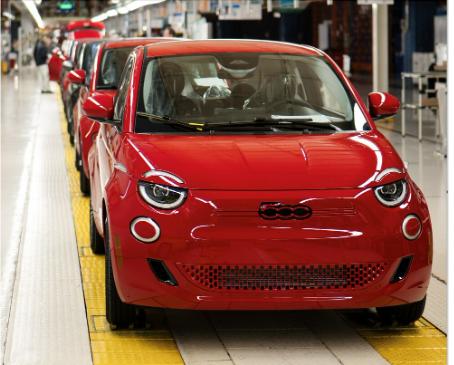
“Automakers are committed to the EV transition – investing enormous amounts of capital and building cutting edge battery electric vehicles, plug-in hybrids, traditional hybrids and fuel cell vehicles that drive efficiency and convert petroleum miles to electric miles,” Bozzella said.
“Consumers have tons of choices. But pace matters,” he emphasized. “Moderating the pace of EV adoption in 2027, 2028, 2029 and 2030 was the right call because it prioritizes more reasonable electrification targets in the next few (very critical) years of the EV transition.”
“These adjusted EV targets – still a stretch goal – should give the market and supply chains a chance to catch up. It buys some time foir more public charging to come online and the industrial incentives and policies of the Inflation Reduction Act to do their thing,” Bozella said.
The United Automobile Workers supports the new standards, saying, “The EPA has made significant progress on its final greenhouse gas emissions rule for light-duty vehicles. By taking seriously the concerns of workers and communities, the EPA has come a long way to create a more feasible emissions rule that protects workers building ICE vehicles, while providing a path forward for automakers to implement the full range of automotive technologies to reduce emissions.”
“The step EPA is taking today will slash climate pollution and air pollution,” said Amanda Leland, executive director of the nonprofit Environmental Defense Fund. “It will bring more jobs for workers, more choices and more savings for consumers, and a healthier future for our children.”
“The U.S. has leapt forward in the global race to invest in clean vehicles, with $188 billion and nearly 200,000 jobs on the way. Jobs in communities across the country, in places like Michigan, Nevada, and Kentucky. These clean car standards will help supercharge economic expansion and make America stronger,” Leland predicted.
Dan Lashof, U.S. director with the World Resources Institute, is supportive, too. “These new standards will speed the adoption of cleaner, more efficient vehicles across America’s roads and go a long way to ensuring that all Americans can access the benefits of electric vehicles. The standards will have a direct impact on Americans’ lives, improving air quality, cutting people’s transportation costs and reducing climate pollution.”
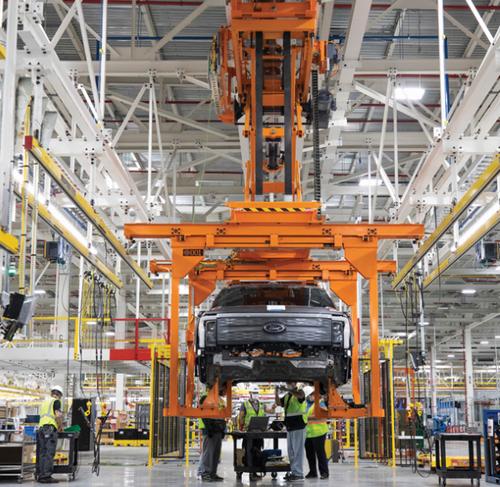
Albert Gore III, executive director of the Zero Emission Transportation Association, ZETA, made an optimistic comment, “These standards make clear that securing America’s global leadership in manufacturing and securing a better future are 100 percent aligned. We have everything we need today to meet and exceed this standard, and that means more of the vehicles sold in America will be made in America.”
Gore is the son of former U.S. Vice President Al Gore (1993 to 2001) and co-winner of the 2007 Nobel Peace Prize for his climate campaigning. Gore III worked for Tesla for seven years in public policy and business development. Current ZETA members include Tesla, Lucid Motors, Rivian, LG, Waymo, Uber, Panasonic and Albemarle.
Among supporters of the new rule is GreenLatinos Sustainable Communities Program Director Andrea Marpillero-Colomina. “We applaud the Biden Administration for enacting the “strongest-ever pollution standards for cars,” which are projected to lead to a 50% reduction in total fleet-wide greenhouse gas emissions in car model 2032. Pollution from vehicles disproportionately burdens Black and brown and low-income communities. These standards ensure that new car buyers have cleaner choices that cost less, and will lead to cleaner air for communities across the country,” she said.
Critics Say New Rule Falls Short
Republicans took aim at the new standards. House Speaker Mike Johnson, a Louisiana Republican, called the rule a “misguided electric vehicle mandate” that will force the U.S. to rely on China and other adversaries for critical minerals to manufacture batteries and force drivers to buy electric.
Regan said the government is not requiring people to buy electric vehicles or any other specific technology, pointing to “multiple pathways companies can choose to comply” with the rule.
But some environmental groups are not satisfied with the EPA’s final 2027-2032 emissions rule.
“Under the EPA’s updated clean car standards, more vehicle pollution will be avoided and more lives saved than would have been under current regulations. That is important to celebrate. But this rule falls far short of what is needed to protect public health and our planet. EPA is giving automakers a pass to continue producing polluting vehicles,” Chelsea Hodgkins, senior policy advocate with the climate program of the nonprofit group Public Citizen.
Public Citizen released a new report last week, “Stuck in Neutral,” which found that since 2019, 10 automakers and industry groups have pumped more than $183 million into lobbying efforts in Washington, D.C. to ease federal emissions requirements.
The largest spender was General Motors, with $48.6 million in lobbying, followed by Toyota at $31 million, and Ford at nearly $21 million since 2019. The Alliance for Automotive Innovation, the industry association that represents major automakers, was the fourth-highest spender on vehicle-related lobbying from 2019-2023.
The top five automakers by U.S. sales – General Motors, Ford, Stellantis, Toyota, and Honda – have claimed that EPA’s stronger emission standards would hurt the industry’s bottom line. Yet at the same time, Public Citizen complains in its report that these same five automakers have profited from marketing and selling larger SUVs and trucks, earning nearly $293 billion in combined profits since 2018, paid shareholders nearly $78 billion in dividends, and repurchased nearly $41 billion of their own stock.
“These rules will save consumers money, protect the health of millions, and give us a shot at a liveable future. Big Auto’s multi-million dollar lobbying efforts and corrupting influence are a direct attack on this progress and our democracy,” Hodgkins argued in support of the EPA’s new standards.
From a different viewpoint, NATSO, representing America’s travel centers and truck stops, SIGMA: America’s Leading Fuel Marketers, and the National Association of Convenience Stores said in a joint statement, “The fastest, most efficient way to lower carbon emissions remains through technology-neutral, market-oriented, consumer-focused policies that encourage all fueling technologies to improve their respective emissions. This rule does not do that. Instead, it functions as an effective mandate for a single technology that at this point has not proven itself to be more viable than other compelling solutions.”
For complete information about the new rule, “Multi-Pollutant Emissions Standards for Model Years 2027 and Later Light-Duty and Medium-Duty Vehicles,” including a summary, history, fact sheets and public comments, click here.
Featured image: Robots build electric vehicles at the University of California, Davis, Institute of Transportation Studies. (Photo courtesy UC Davis)
© 2024, Environment News Service. All rights reserved. Content may be quoted only with proper attribution and a direct link to the original article. Full reproduction is prohibited.

